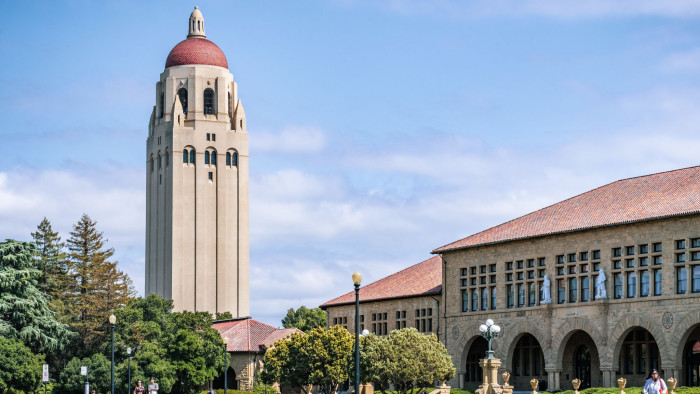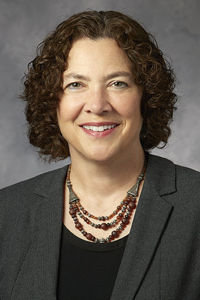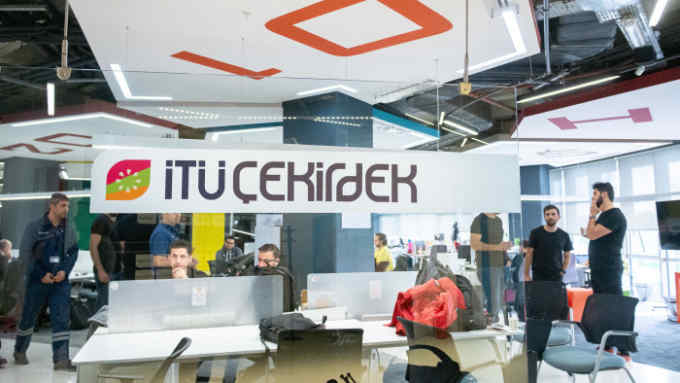Stanford gives inventors a hand after helping to create Silicon Valley

Roula Khalaf, Editor of the FT, selects her favourite stories in this weekly newsletter.
When Solange Massa was doing her final year of medical training, she decided she “couldn’t just be a doctor using medieval tools” like the forceps she saw used to bring a baby into the world.
She became a translational scientist instead — bridging the gap between research and the patient to devise new ways of delivering medical care.
Now a postdoctoral fellow at Stanford, the Argentine-born inventor is an enthusiastic supporter of the university’s Office of Technology Licensing. The OTL manages all intellectual property that is automatically owned by the university if developed using anything more “than incidental use” of its facilities — not counting, for example, access to standard applications on a laptop or use of a library. After 15 per cent is deducted for costs, any royalties are split three ways between the inventor, their department, and the relevant school (Stanford comprises seven constituent schools).
Established in 1970, the office has a mission to “promote the transfer of Stanford technology for society’s use and benefit while generating unrestricted income to support research and education”. The widely copied initiative boosted IP revenues from a paltry $4,500 a year before the OTL got going, to $49m last year (their lowest level since a high of $384m in 2005), enabling Stanford to enjoy the fruits of research on its premises and keep entrepreneurial faculty, staff and graduates.

Nowadays, says Karin Immergluck, OTL’s executive director, net income from the commercialisation of IP is just “a drop in the ocean” of Stanford’s overall research budget, most of which comes from the US government and is earmarked to achieve specific results. The income managed by the OTL gives the university a source of discretionary funding for other needs, such as new teaching positions.
Ms Immergluck also points out Stanford’s role in the development of Silicon Valley itself, beginning when late engineering dean Frederick Terman encouraged student entrepreneurs William Hewlett and David Packard to further develop and commercialise their invention in the 1930s. They eventually set up shop on the new industrial park established by Prof Terman on unused campus land in Palo Alto in the 1950s.
Universities & Innovation
Other articles in this special report include:
Connections count when it comes to start-ups
Successful university incubators forge links across disciplines
Istanbul incubator fosters Turkey’s tech ambitions
ARI Teknokent provides a platform for entrepreneurs to focus on their innovations
Subscribers can receive alerts when new content is published in this series by following ‘Innovation’ with myFT.
For Dr Massa — whose patents in the pipeline include devices for dialysis and the oral delivery of medication — the guidance that OTL provides to inventors enable her to avoid various pitfalls as she brings her Stanford-based innovations to market.
From ascertaining the originality of inventions to submitting applications to the US patent office, she says the guide eliminates the need for inventors to hire expensive patent attorneys or to give lawyers a slice of equity in lieu of fees.
Having patented an invention, Stanford gives entrepreneurs a licence to exploit it, always giving preference to start-ups over big companies, according to Ms Immergluck.
“If you produce research but don’t protect the inventor, your invention may never come to market,” says the 35-year-old Dr Massa. “It’s important to show other universities they can do this too.”
Yet not everyone opts to use the OTL in the first instance. Stanford doctoral candidate Robert Konrad has until recently done any “commercialisable” work in his own and his fellow inventors’ “living rooms” while pursuing a PhD in optics and visual perception for virtual and augmented reality systems.
The 27-year-old Polish-Canadian-American and his start-up co-founders are now looking for investors to bring their self-focusing Autofocals spectacles to market. But Mr Konrad does not yet know whether he will need to use some of his Stanford-based research for the venture; if he does, he will need to work with the OTL.
While other universities have copied Stanford’s entrepreneurial approach, Mr Konrad argues that no other institution can match its location “smack in the middle of Silicon Valley”. He draws a contrast with Canadian tech hubs such as Toronto, where he says financiers are relatively “risk averse”, and the University of California Berkeley, which is just outside the valley.
“People [here] are very entrepreneurial risk-takers and they will put you in touch with other people who can help you,” he says.
This article has been amended since publication to clarify both the nature of Robert Konrad’s dealings with the OTL, and the circumstances in which Stanford owns intellectual property.

Comments